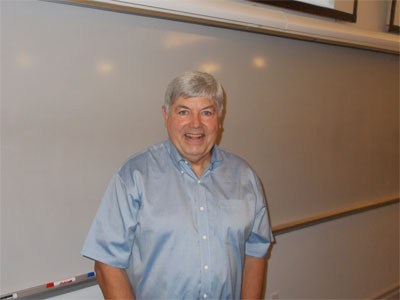Dr. Scott Burns, a geology professor from Portland State University, visited Mines to explain the current earthquake situation for the northwestern United States in his lecture, “Engineering Geology Challenges on the Cascadia Margin, Pacific Northwest, USA.”
The primary focus of Burns’ lecture was Oregon. The northwestern state has just recently been identified as a high-risk area for subduction zone earthquakes. Before 1988, there were absolutely no building codes in the state. Recent research has stressed the importance of updating the standards, and as a result, “Oregon is slowly becoming earthquake-ready.”
What makes subduction zones so dangerous for earthquakes is the large area of contact between the two tectonic plates involved. When an entire sheet of oceanic crust collides and mashes with the continental crust, it releases huge amounts of energy. Massive earthquakes with magnitudes well above 8.0 on the Richter scale have been recorded at subduction zones near Haiti, Japan, and Chile. While some of these locations are prepared for large earthquakes, Oregon, in many ways, is not.
Geologists like Burns have identified problematic petroleum storage locations in Oregon that could be wiped out due to the liquefaction of sand buried beneath the soil. In the event of an earthquake, emergency efforts require gasoline to run generators and rescue machinery. Burns said, “If this resource was gone, many more people could go missing or even die.”
In comparison, California is a well-known area for earthquakes, and as such the state has large amounts of well-organized data regarding the activity level and danger of fault lines. Using California as an example, seismologists in Oregon, including Burns, are striving make the state earthquake-ready in a similar manner. According to Burns, this prevention process includes providing “earthquake insurance for residents, preparation of neighborhoods and homes, and public safety routes and drills.”
After covering the somewhat unfamiliar seismic reality of the Pacific Northwest subduction zones, Burns left the audience with an important message, “If one geological hazard doesn’t get you, another will.”
Burns is a world famous geology professor and speaker, having lectured over 10,000 students in his career. He attained his Bachelor’s Degree and Master’s at Stanford University, and his PhD at University of Colorado. He has taught at the professional level for 41 years, published over 200 abstracts, and received countless teaching awards. This particular lecture focused on earthquakes and the commonly overlooked effects of earthquakes from an engineer’s standpoint.



'Engineering geology challenges on the Cascadia Margin' has no comments
Be the first to comment this post!